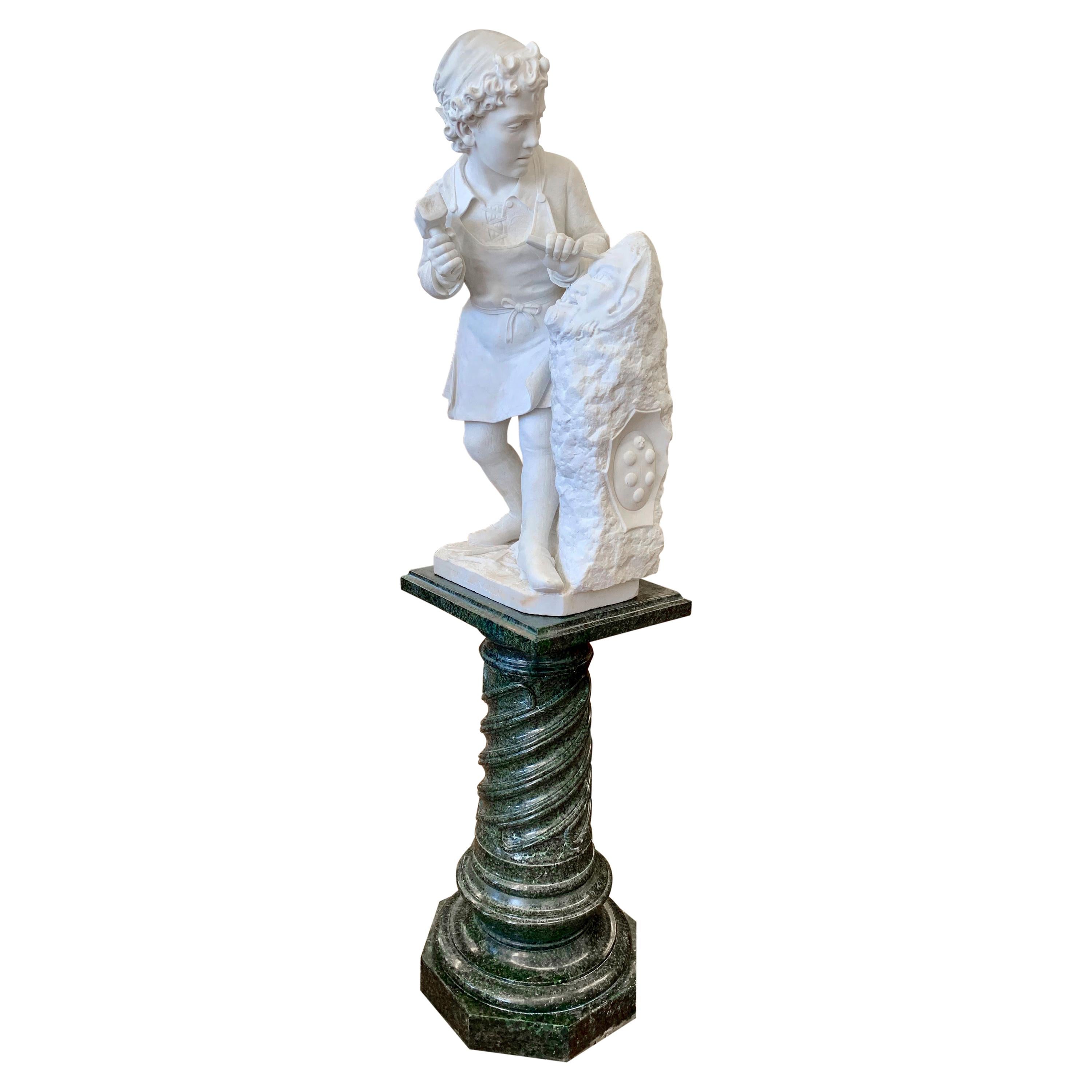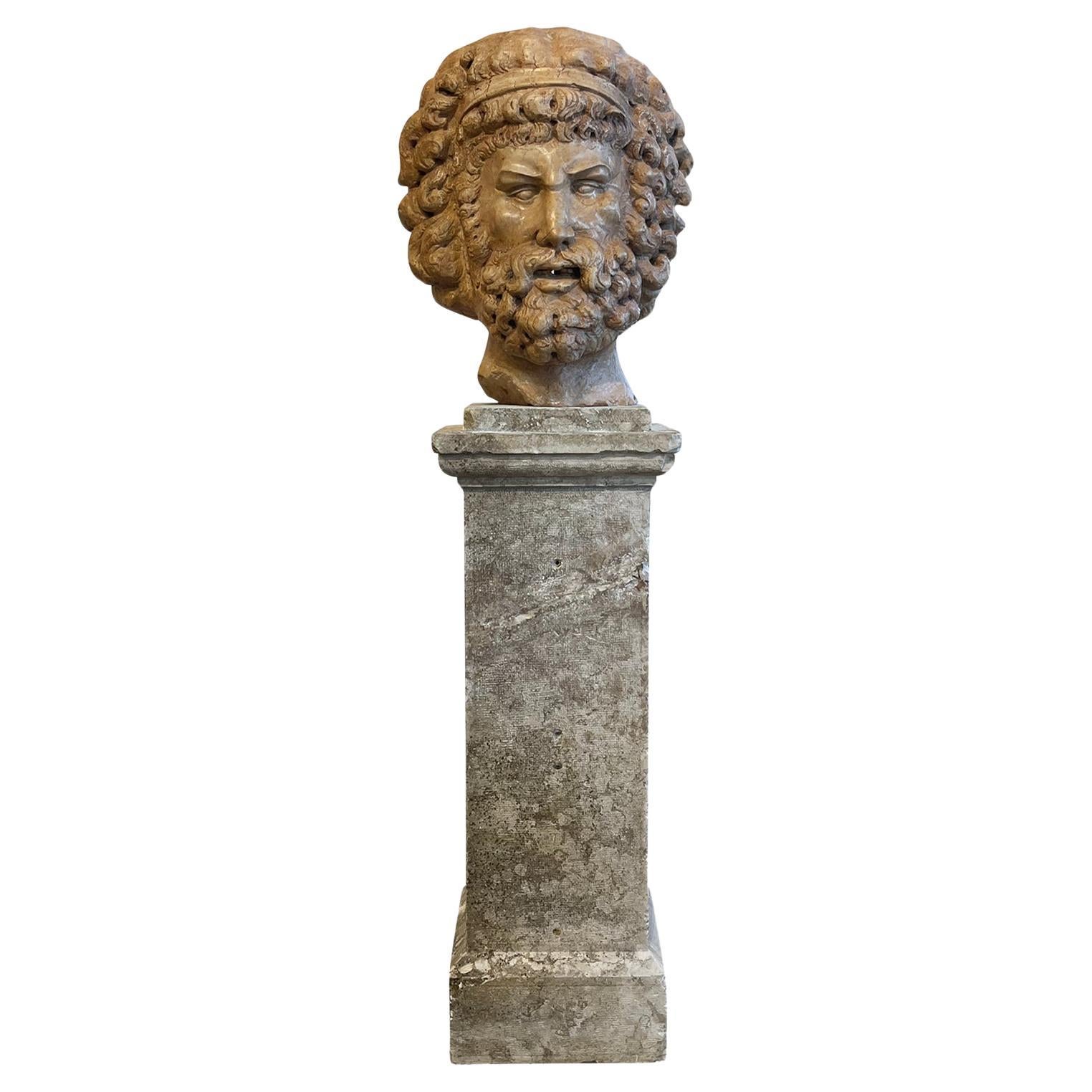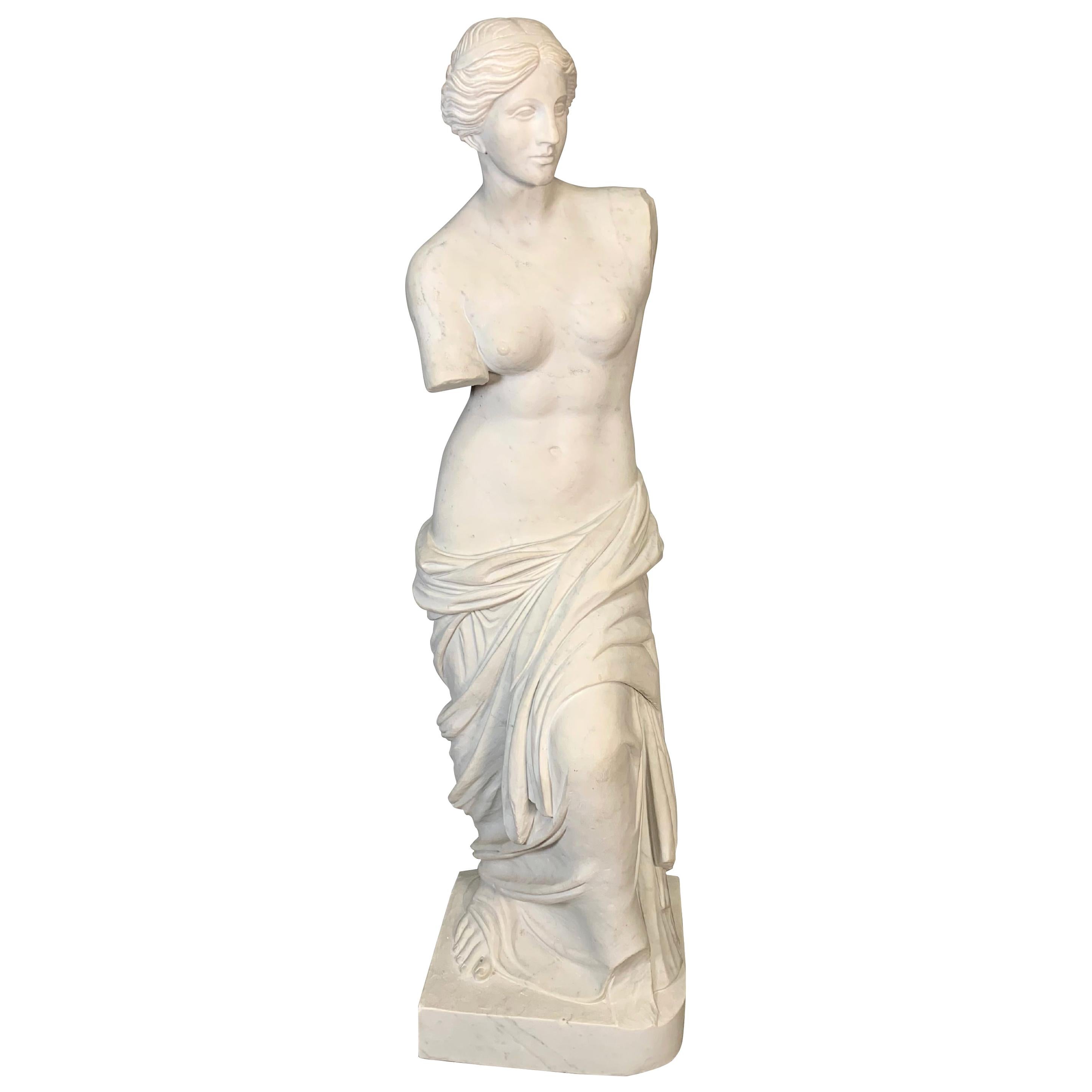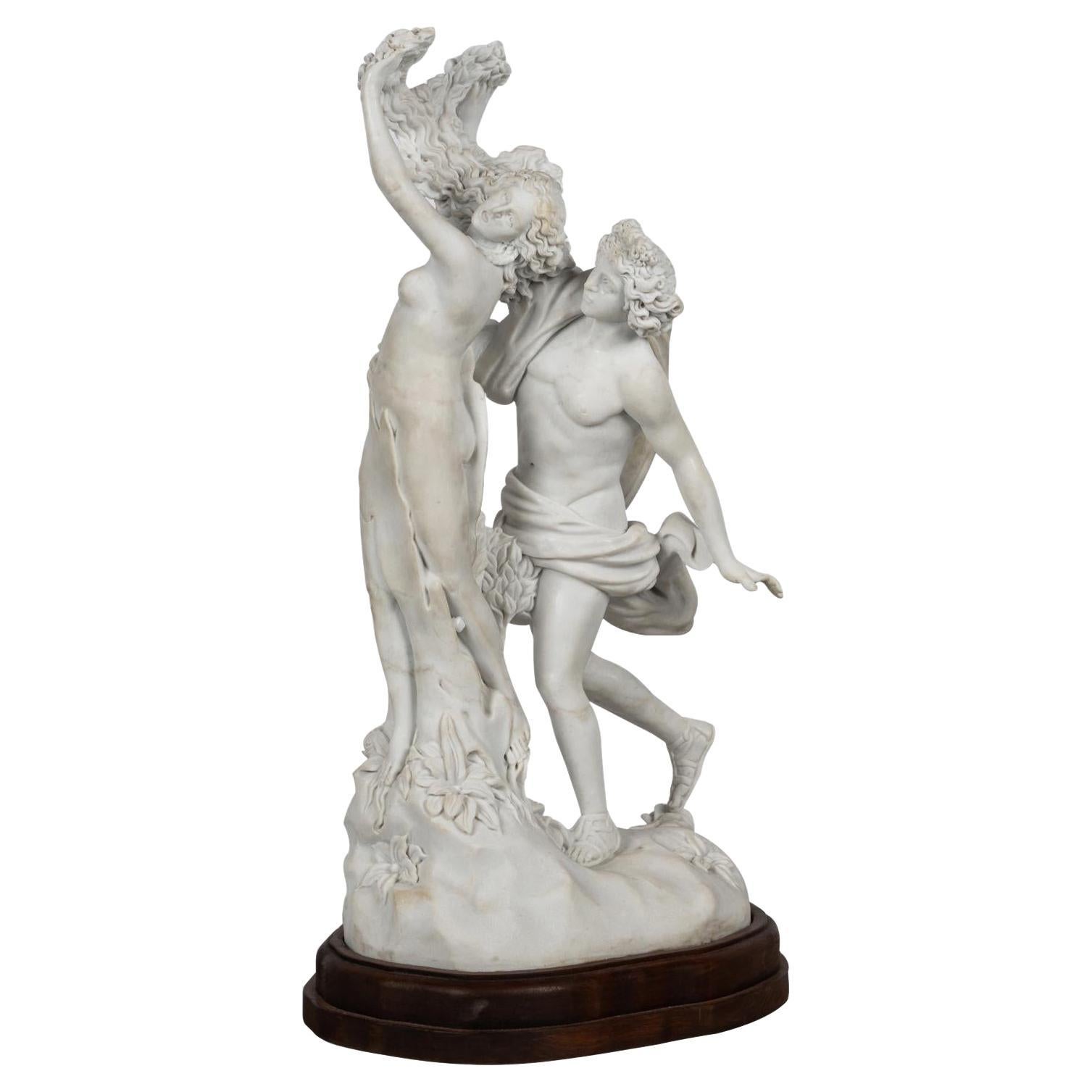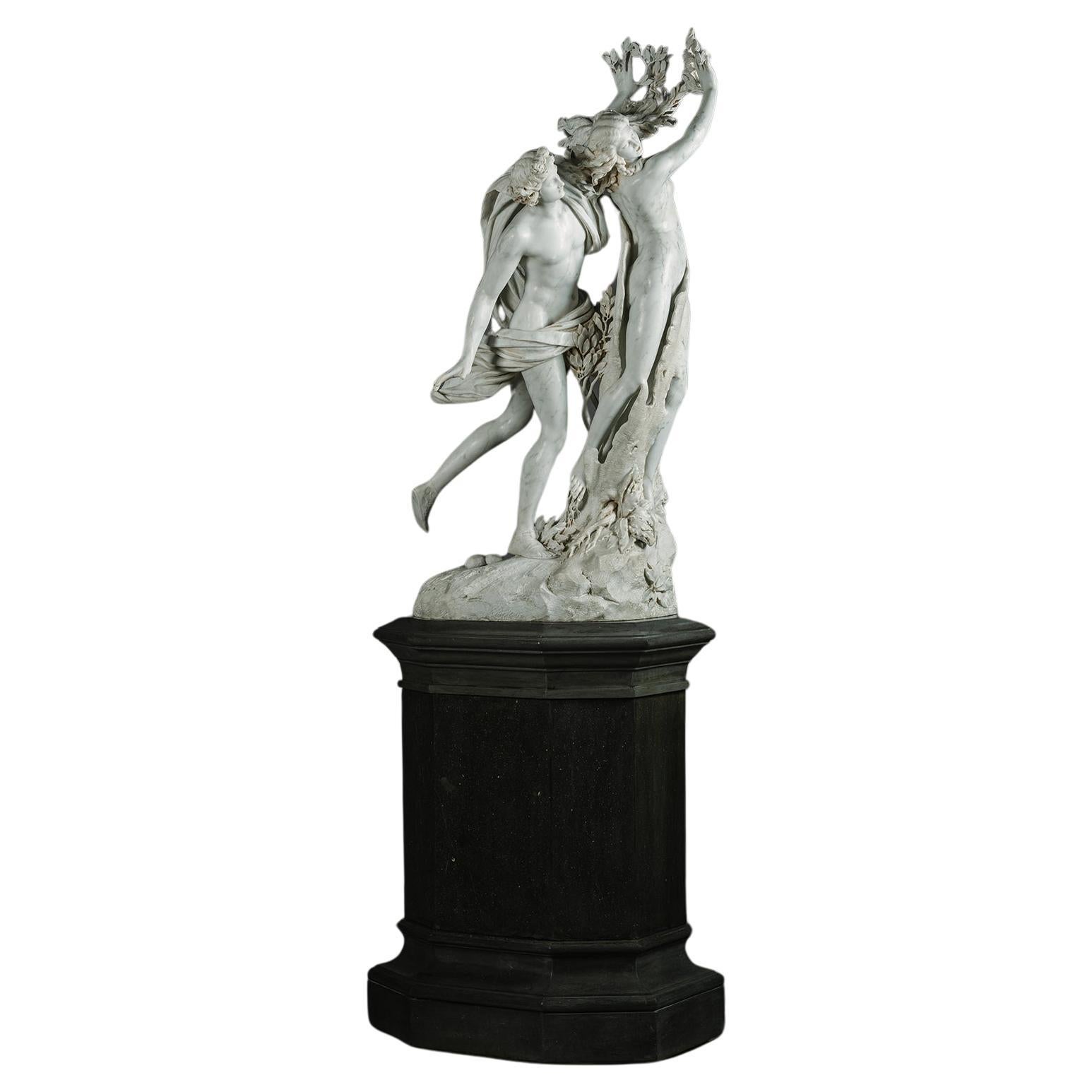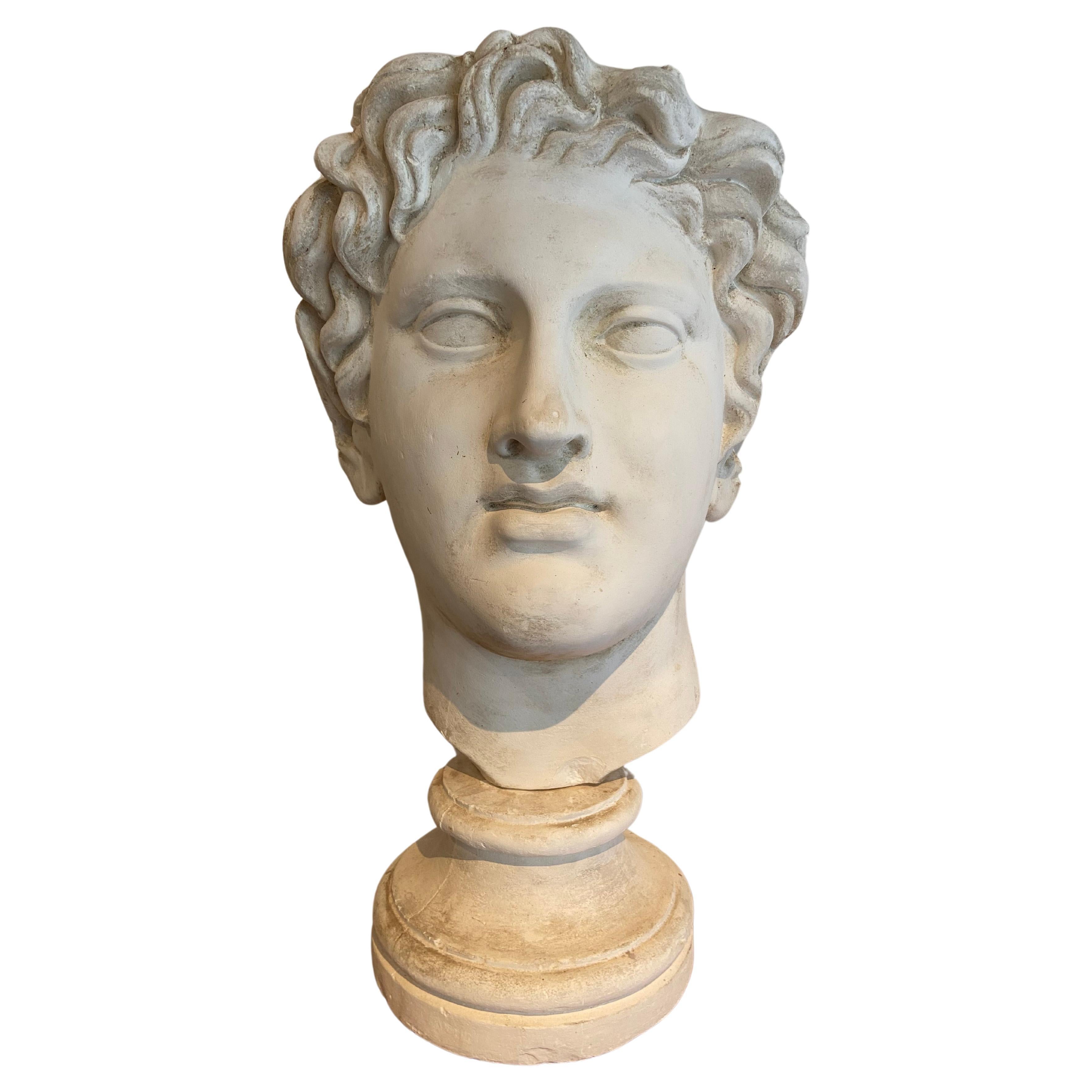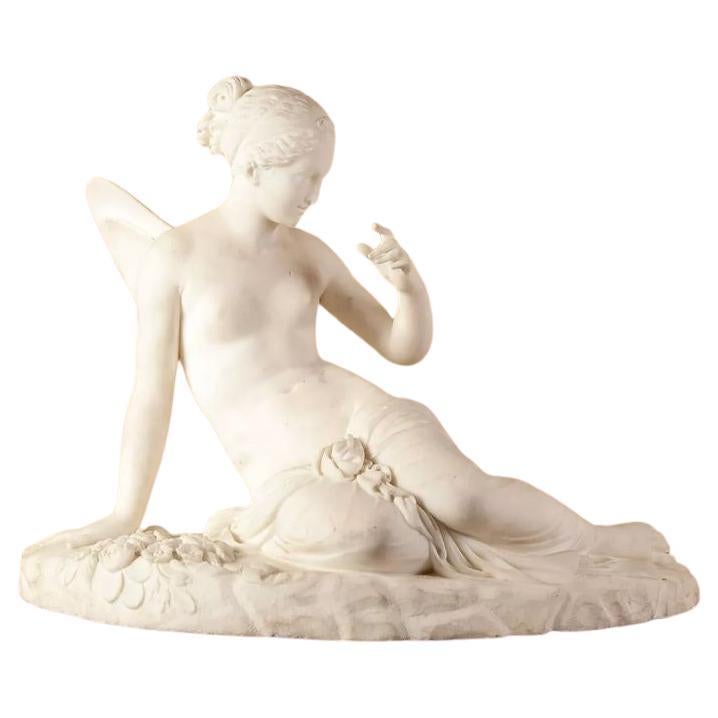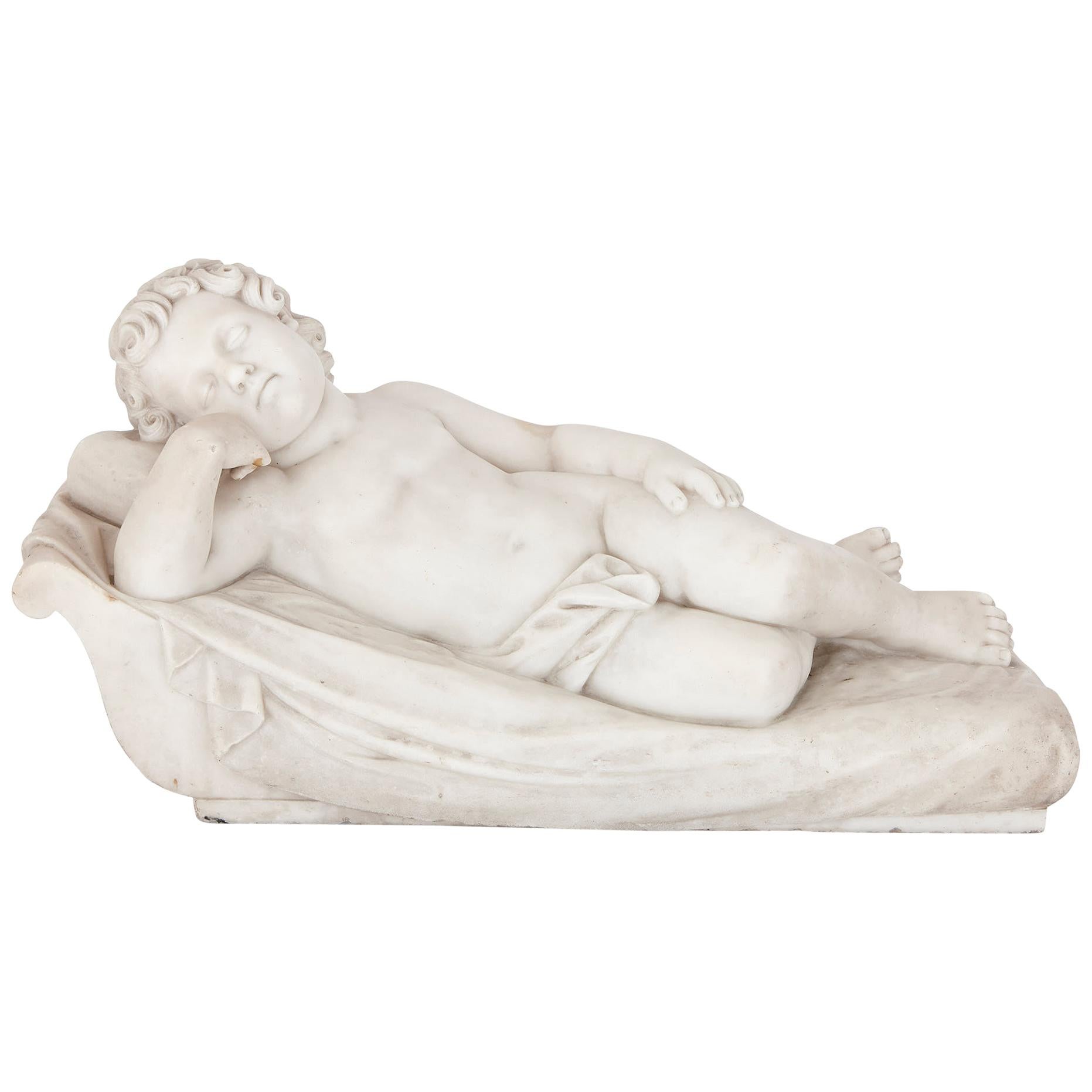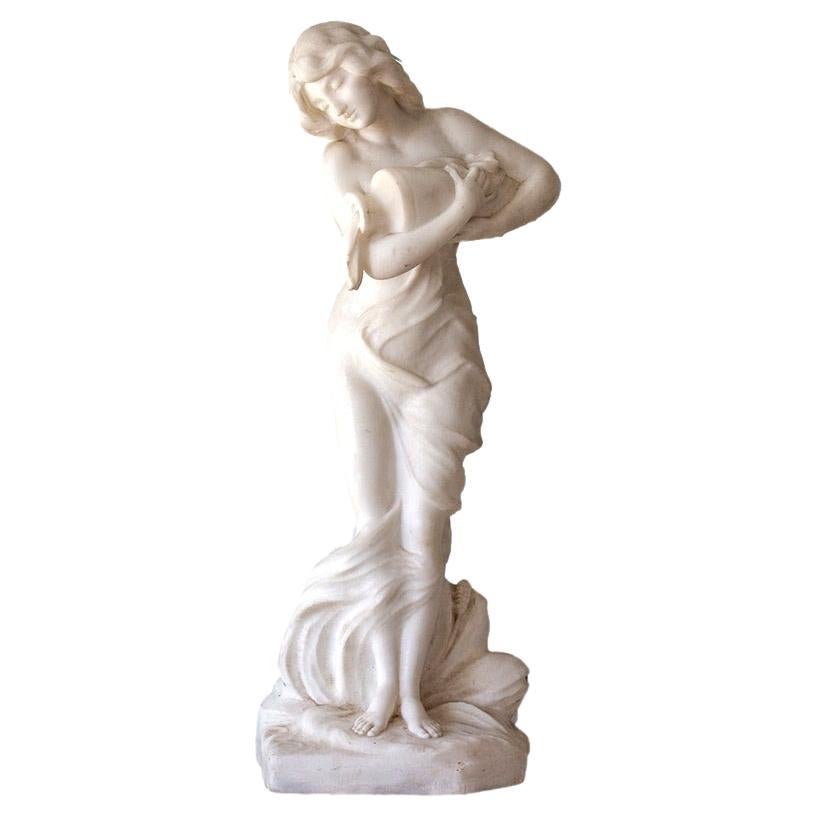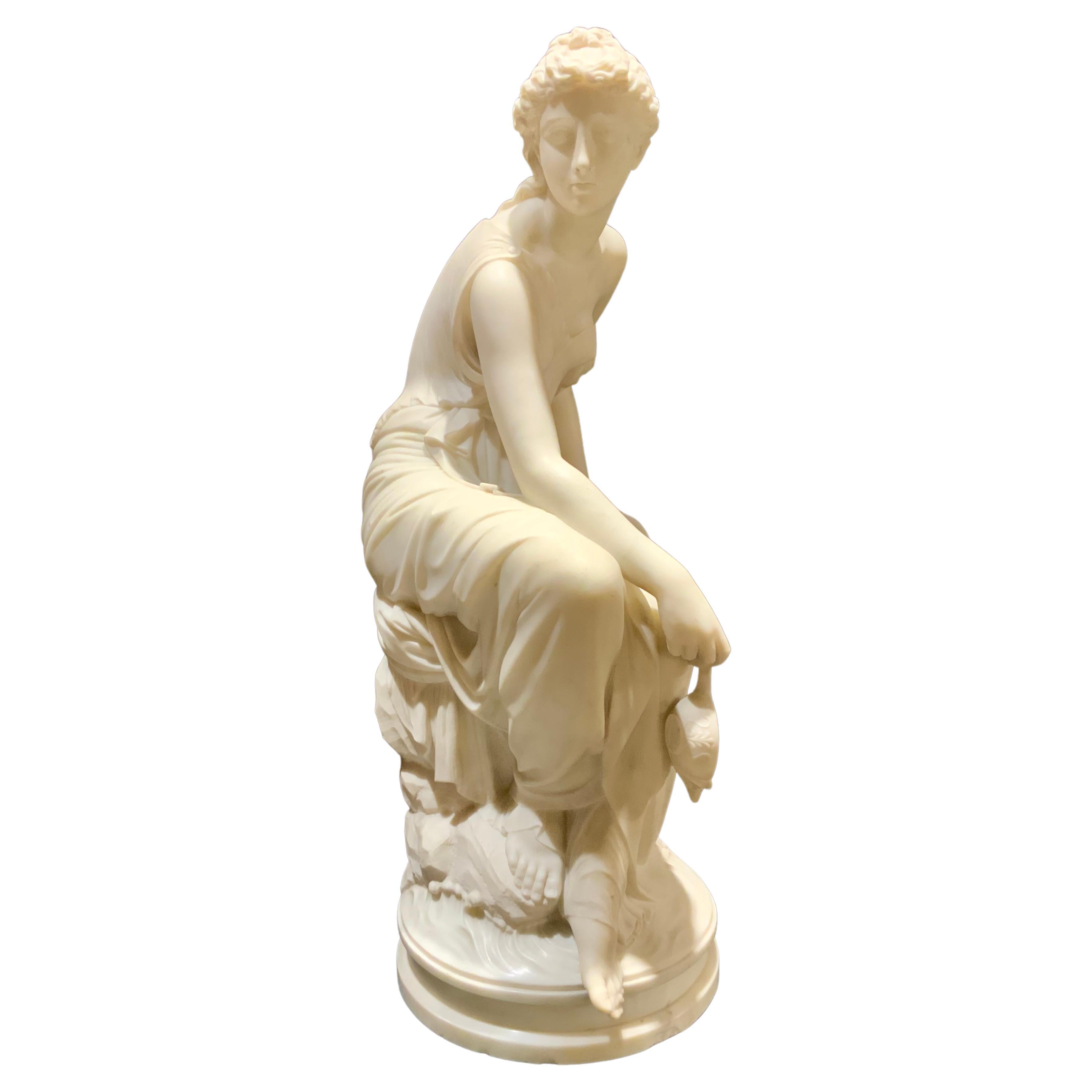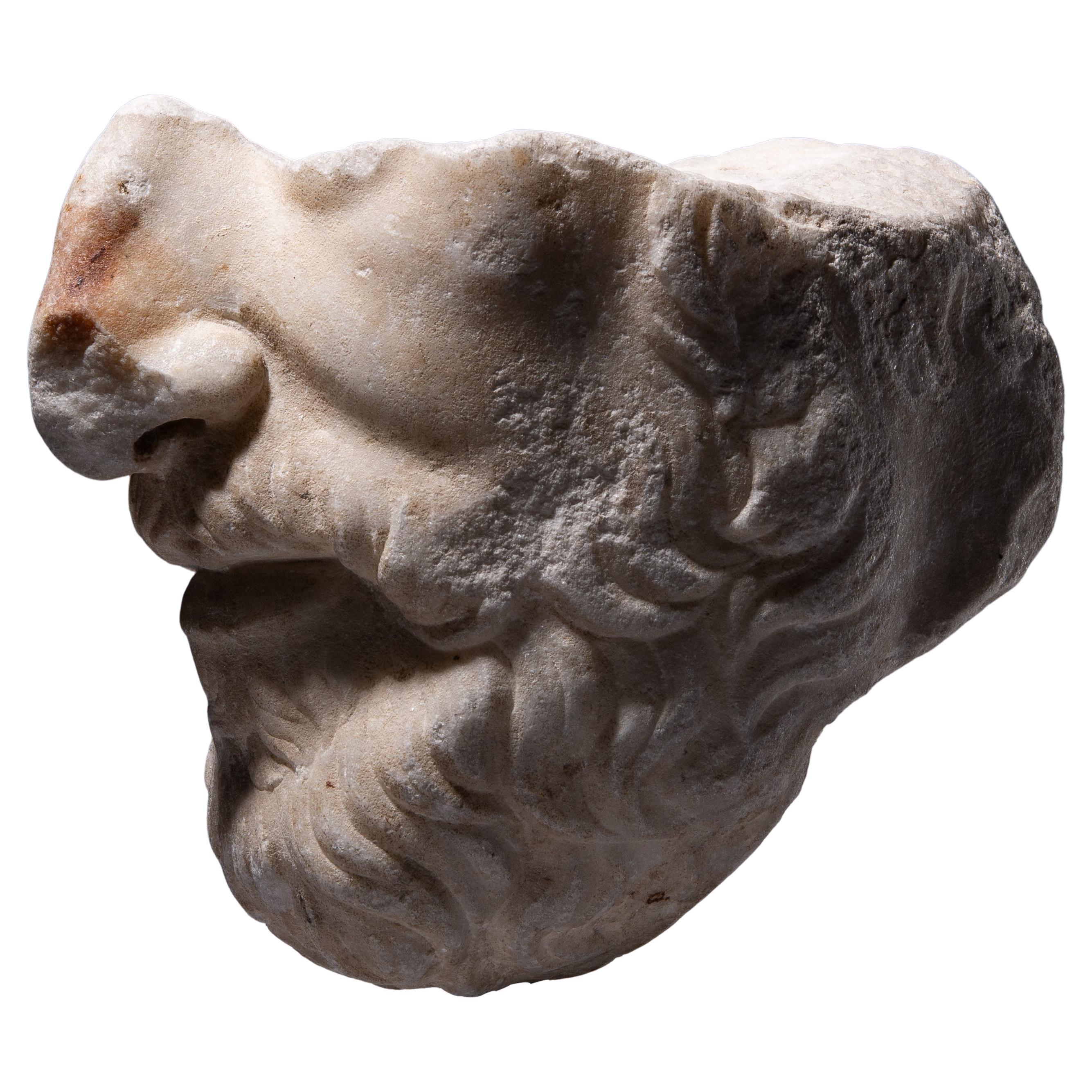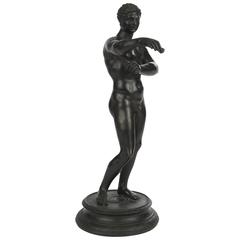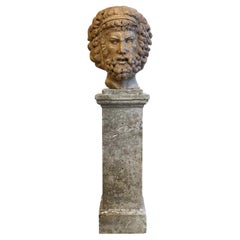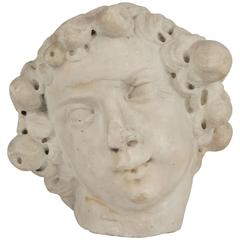
Italian White Marble Head of a Bacchic Figure
View Similar Items
Want more images or videos?
Request additional images or videos from the seller
1 of 6
Italian White Marble Head of a Bacchic Figure
About the Item
- Dimensions:Height: 14 in (35.56 cm)Width: 10.5 in (26.67 cm)Depth: 8.75 in (22.23 cm)
- Style:Renaissance (Of the Period)
- Materials and Techniques:
- Place of Origin:
- Period:
- Date of Manufacture:Late 16th-Early 17th Century
- Condition:
- Seller Location:New York, NY
- Reference Number:1stDibs: LU188336851013
About the Seller
No Reviews Yet
Vetted Seller
These experienced sellers undergo a comprehensive evaluation by our team of in-house experts.
Established in 2009
1stDibs seller since 2016
22 sales on 1stDibs
Typical response time: Several days
More From This SellerView All
- Italian Grand Tour Bronze Figure of an AthleteLocated in New York, NYItalian Grand Tour bronze figure of an athlete, Italy, 19th century. Measures: H 11.5 in.Category
Antique 19th Century Italian Figurative Sculptures
MaterialsBronze
- Meissen Biscuit Figure of DionysusLocated in New York, NYGreek mythological figure of Dionysos, the god of the grape harvest. Youthful sensual portrayal of dionysus, beardless, holding grapes and staff. Meissen, Marcolini period (1774-1814). The Meissen Marcolini period is sought after by collectors. Named after Count Camillo Marcolini who served as director and perfected neoclassical style of Meissen forms...Category
Antique 18th Century German Figurative Sculptures
MaterialsPorcelain
- 19th Century Italian Classical Marble Bust of Venus ChiurazziLocated in New York, NYPsyche of Capua. White marble bust of Venus, after antique. Italy, late 19th century. Inscribed, 'Chiurazzi.' Measures: 21 in. (53.3 cm) height.Category
Antique Late 19th Century Italian Classical Greek Busts
MaterialsCarrara Marble
- 18th Century Venetian Bronze Figural InkwellLocated in New York, NYPatinated bronze urn-shaped inkwell rests on three winged-horses evoking movement and action. The body of the inkwell is decorated with faces among garlands and the lid is topped by a seated putti holding fruitVenetian patinated bronze figural inkwell...Category
Antique 18th Century Italian Renaissance Inkwells
MaterialsBronze
- 18th Century Figural Bronze Sculpture of ZeusLocated in New York, NYBronze figure of Zeus attended by eagle, his symbolic form.Category
Antique 18th Century Italian Figurative Sculptures
MaterialsBronze
- 19th Century Carved Alabaster Figure of a WomanLocated in New York, NYCarved figure of a woman resting along a figural console table, 19th century.Category
Antique 19th Century Italian Figurative Sculptures
MaterialsAlabaster
You May Also Like
- ANTIQUE marble Figure of Michelangelo Carving the Head of FaunBy Pietro BazzantiLocated in Los Angeles, CAYoung Michelangelo Carrara marble. Signed: P. Bazzanti, Florence (Italian, 1825-1895) Circa 1870 This magnificent 19th-century hand-carved marble sculpture depicts the young artist...Category
Antique 19th Century Italian Figurative Sculptures
MaterialsCarrara Marble
- 19th Century Rosso Marble Head of Zeus - Antique Italian DecorLocated in West Palm Beach, FLAn antique hand carved Rosso Verona marble sculpture or mask of Zeus with detailed carvings, in good condition. Similar can be viewed at the temple collection in the British museum i...Category
Antique 19th Century Italian Renaissance Statues
MaterialsMarble
- A Large Italian Carved White Marble Figure of Venus De MiloBy Praxiteles 1Located in Los Angeles, CAThis elegant Italian hand carved marble figure was made on early 20th century, and is a copy of the famous Venus De Milo marble sculpture (Aphorid...Category
Vintage 1920s Italian Classical Greek Figurative Sculptures
MaterialsMarble
- Italian Marble Figural GroupLocated in Cypress, CAImpressive Italian hand carved white marble figure of a man behind a semi nude standing woman in a very romantic scene. unsigned. Meticulous attention ...Category
Late 20th Century Italian Figurative Sculptures
MaterialsMarble
Sold$6,500 - A White Statuary Marble Figural Group of Apollo and Daphne After BerniniBy BerniniLocated in Brighton, West SussexAn Impressive White Statuary Marble Figural Group of Apollo and Daphne After The Celebrated Model by Gian Lorenzo Bernini (1598–1680) at the Galleria Borghese in Rome, On Dove Grey Marble Pedestal. Sculpted in the round from a single block of white statuary marble. The male figure of Apollo captured as if in motion, running forward with his weight balanced on his right leg, his robe billowing behind. He leans forward encircling with his left arm the goddess Daphne and at that very moment she transforms into a laurel tree. The statue stands atop an original solid dove grey marble pedestal with rotating mechanism. Bernini’s depiction of the transformation myth of Apollo and Daphne is a sculptural masterpiece of pure virtuosity. Bernini pushes to the limit the plastic possibility of sculpted marble to freezeframe the moment when the goddess Daphne transforms into a laurel tree to escape Apollo. Just as Apollo thinks he has caught her, Daphne’s fleeing form begins to be enveloped by the encircling bark; her fingers leaf out; her toes take root. Apollo encircles her waist with a confident arm; but his facial expression indicates the beginning of an awareness that something has gone wrong. Daphne seems ignorant of her transformation as she looks back over her shoulder, lips parted in fright. Her mouth seems to frame a silent scream as her face goes blank under the force of transformation. Daphne’s hair swings around as a result of her sudden arrest and blows free with a lightness Bernini himself felt he never equalled. The story of Apollo and Daphne originates in Greek mythology, but the most well-known version is the lyrical telling by the Roman poet Ovid in his Metamorphoses (I.438-567), a collection of Greek fables first written in 8 CE. The myth purportedly explains the origin of the laurel tree and its connection to Apollo. He says he will wear her leaves in his hair, will use her wood to make a bow and lyre and that a crown made of her branches will adorn the heads of royalty and campions of game and battle. Apollo uses his powers of eternal youth and immortality to render the laurel tree an evergreen. The subject of Apollo and Daphne is common in paintings but rare in sculpture for the obvious reason that neither hot pursuit nor transformation from flesh to vegetation seemed remotely suited to three-dimensional treatment. However, Bernini triumphs in his handling of such a challenging subject, creating an hallucinatory effect whereby the figures appear to almost skim over the ground. Bernini’s statue of Apollo and Daphne was commissioned by Cardinal Borghese (1577-1633) and begun in 1622 but not completed until 1625 owning to an interluded during which Bernini sculpted his statue of ‘David’. Cardinal Borghese was secretary to his uncle Pope Paul V and in the classic pattern of papal nepotism wielded enormous power as the effective head of the Vatican government. Cardinal Borghese as an art collector was patron of the painter Caravaggio and the artist Bernini. As was the practice, Bernini did not execute the sculpture entirely by his own hand, but with help from his workshop. The finer details that show Daphne’s conversion from human to tree, such as the twigs and leaves springing from her hands, were undertaken by Bernini’s pupil Giuliano Finelli (1601–1653). Apollo and Daphne is still in situ in the Galleria Borghese in the room for which is was made, although today it is positioned at the centre of the room instead of closer to the wall and facing a doorway as originally intended. Bernini’s statue of Apollo and Daphne was immediately acclaimed as a masterpiece for revealing his outstanding talent and innovative spirit, especially the ability to portray both actions and emotions. Appreciation for Apollo and Daphne continued, with a French traveller in 1839 complimenting it as "astonishing both for mechanism of art and elaborateness, and full of charm in the ensemble and the details” (A. Valery, Historical, Literary, and Artistic Travels in Italy: A Complete and Methodical Guide for Travellers and Artists. Baudry. 1839 p. 596). More recently, the historian Robert Torsten Petersson called it “an extraordinary masterpiece ... suffused with an energy that works out of the tips of the laurel leaves and Apollo's hand and drapery” (R.-T. Petersson, Bernini and the Excesses of Art, Fordham Univ Press, 2002, p.80). The fame of Apollo and Daphne made it a must see for visiting Grand Tourists during the 18th and 19th centuries and the wealthiest could commission a replica. Fulfilling this demand in the late 19th century were the workshops of Roman sculptor such as Raffaello Romanelli, Ernesto Gazzeri...Category
Antique 19th Century Italian Renaissance Figurative Sculptures
MaterialsStatuary Marble
- Stucco head of a roman figureLocated in 'S-HERTOGENBOSCH, NLStucco head of a Roman figure. Signed on the back (unknown). The head is separate from the base.Category
Vintage 1950s Italian Classical Roman Busts
MaterialsStucco
